Caring for a pet curly hair tarantula can be a rewarding and fascinating experience, but it is important to do your research and understand the specific needs of these creatures. In this guide, we will cover everything you need to know about caring for a pet curly hair tarantula, from setting up their habitat to feeding and handling them
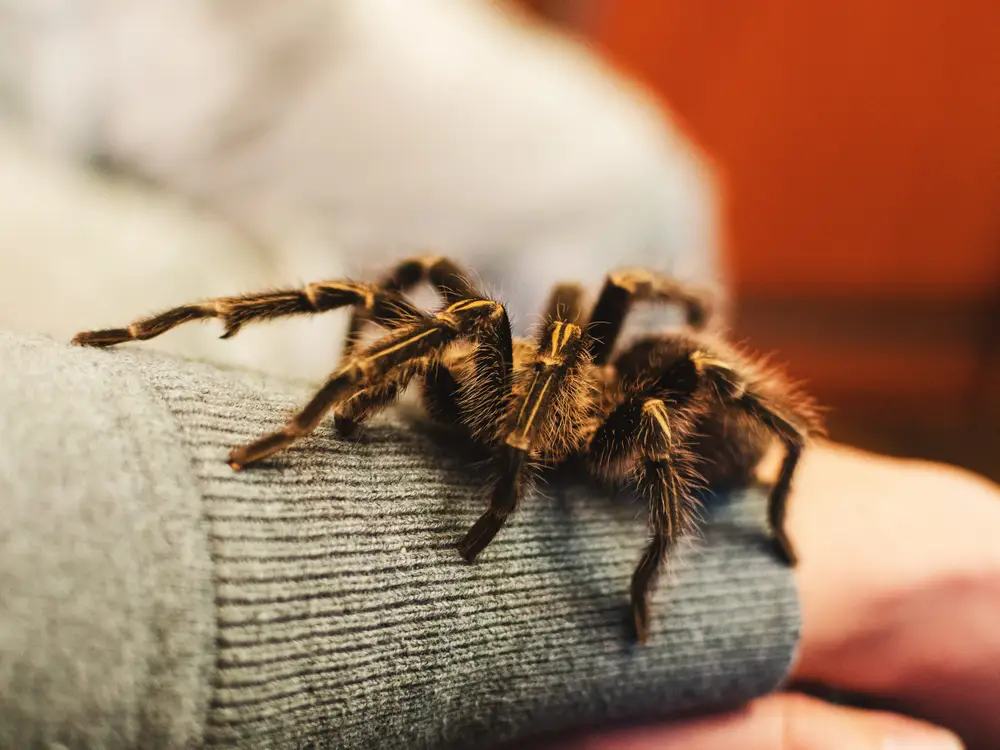
Setting up a Habitat
The first step in caring for a pet curly hair tarantula is setting up their habitat. Tarantulas require a space that is both secure and comfortable for them to live in. Here’s what you’ll need:
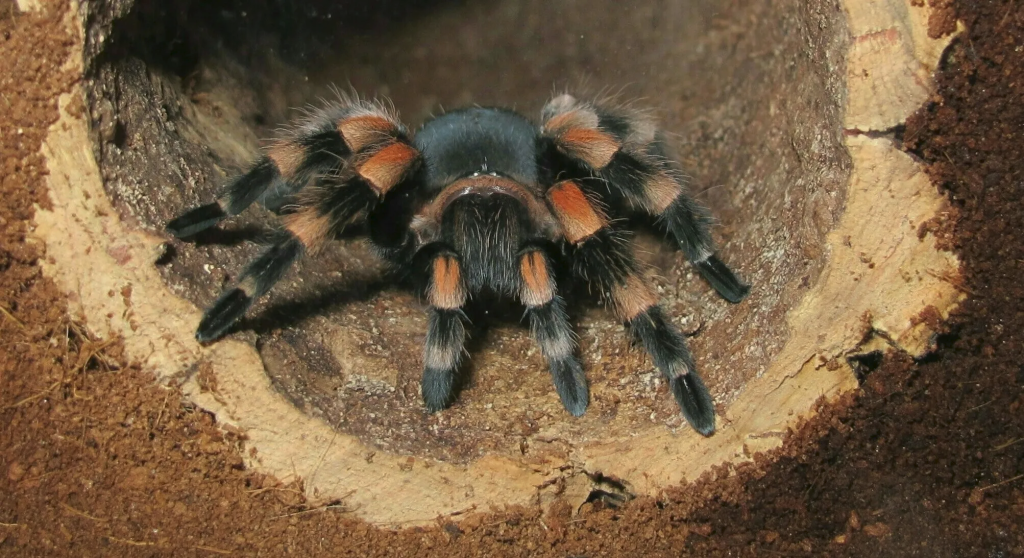
- Terrarium: A glass or acrylic terrarium is ideal for a pet curly hair tarantula. It should be at least 10 gallons in size, with a secure lid that allows for proper ventilation.
- Substrate: Tarantulas need a substrate that is both comfortable for them to walk on and easy to maintain. Coconut fiber, sphagnum moss, and vermiculite are all good options.
- Hiding places: Tarantulas are burrowing animals, so they need places to hide. You can provide this by adding pieces of bark, fake plants, and other decorations to the terrarium.
- Water dish: Tarantulas need access to clean water at all times. Use a shallow water dish that is large enough for the tarantula to drink from without drowning.
- Heat source: Tarantulas need to be kept at a temperature between 70 and 80 degrees Fahrenheit. A heat lamp or heating pad can be used to achieve this temperature range.
Feeding Your Tarantula
Curly hair tarantulas are carnivorous, which means they eat insects and small animals. Feeding your tarantula is one of the most important aspects of their care. Here’s what you need to know:
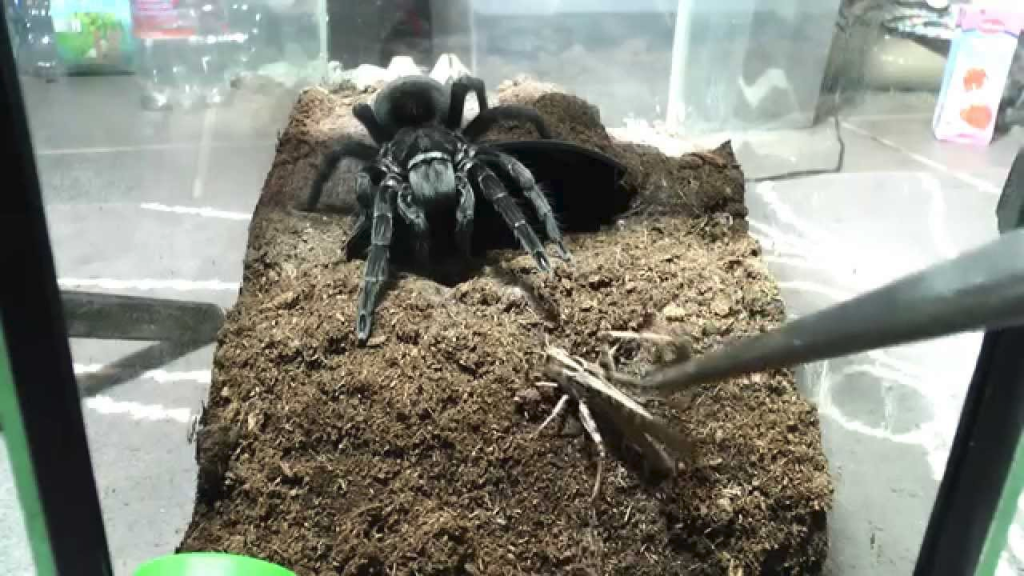
- Food: Tarantulas eat a variety of insects, including crickets, roaches, and mealworms. You can also offer small rodents like mice or rats, but this is not recommended for curly hair tarantulas. Feed your tarantula once a week, and remove any uneaten food after 24 hours.
- Gut-loading: It’s important to gut-load your tarantula’s food, which means feeding the insects a nutritious diet before feeding them to your tarantula. This ensures that your tarantula gets all the necessary nutrients.
- Feeding time: Tarantulas are nocturnal, so it’s best to feed them in the evening or at night. This is when they are most active and hungry.
- Handling: Do not handle your tarantula while it is eating. This can stress the tarantula out and cause it to become defensive.
Maintaining Your Tarantula’s Habitat
Maintaining your tarantula’s habitat is an important part of their care. Here’s what you need to do:
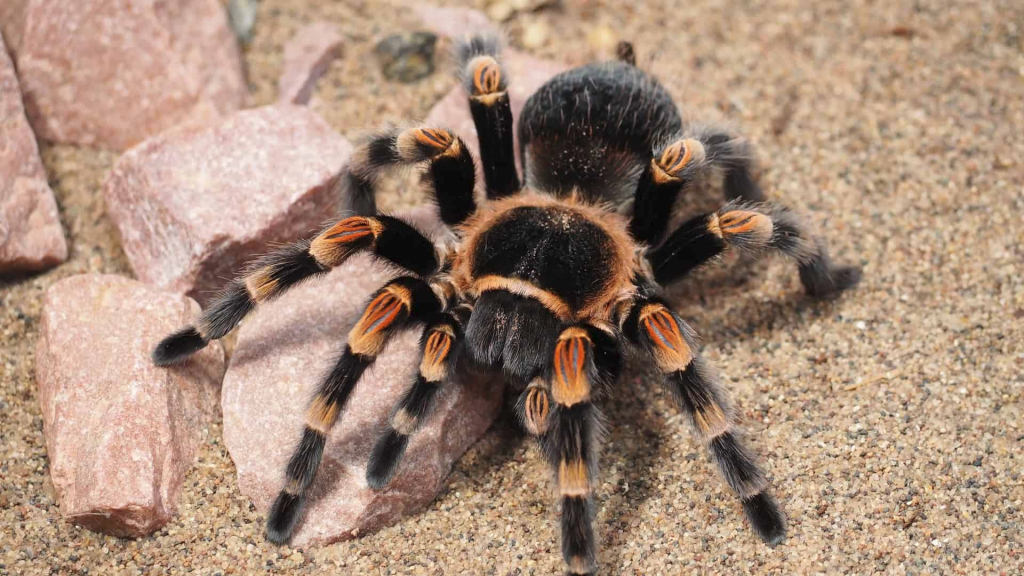
- Cleaning: Clean the tarantula’s habitat once a month by removing any uneaten food, feces, and shed skin. Replace the substrate with fresh material.
- Water: Change the tarantula’s water dish daily and ensure that it is always clean and filled with fresh water.
- Temperature: Use a thermometer to monitor the temperature in the terrarium and adjust the heat source as necessary.
- Humidity: Curly hair tarantulas require a humidity level between 60% and 70%. You can achieve this by misting the terrarium with water every day.
Handling Your Tarantula
Handling your tarantula is not recommended, as it can be stressful for the tarantula and can cause them to become defensive. However, if you must handle your tarantula, follow these guidelines:

- Be gentle: Tarantulas are delicate creatures, so be very gentle when handling them. Avoid picking them up by their legs or abdomen, as this can harm them.
- Use a container: The safest way to handle a tarantula is by using a container or cup. Gently coax the tarantula into the container and then hold it from the outside.
- Be patient: Tarantulas are not pets that enjoy being handled. If your tarantula becomes stressed or agitated, put it back in its habitat and try again at a later time.
- Be aware of their behavior: Tarantulas will give warning signals if they feel threatened. These can include raising their front legs, fangs, or abdomen. If you see these warning signs, put the tarantula back in its habitat immediately.
Common Health Issues
While tarantulas are generally hardy pets, there are some health issues that can arise. Here are a few common health problems and how to address them:

- Dehydration: Tarantulas can become dehydrated if they don’t have access to clean water. Make sure that the water dish is always filled with fresh water.
- Mites: Mites are a common problem in tarantula habitats. You can treat them with a mite spray, but it’s important to clean the entire habitat thoroughly to prevent reinfestation.
- Molting issues: Tarantulas will shed their skin periodically as they grow. If your tarantula is having trouble molting, it may be due to humidity issues. Mist the terrarium with water to increase humidity and provide a hiding place for the tarantula to molt in.
- Illness: If you notice that your tarantula is behaving abnormally or showing signs of illness, such as loss of appetite or lethargy, consult a veterinarian who specializes in exotic pets.
Curly Hair Tarantula Care: A Comprehensive Guide
Taking care of a curly hair tarantula is not as difficult as it seems. With the right environment, diet, and attention, you can keep your pet tarantula healthy and happy. In this guide, we will cover everything you need to know about curly hair tarantula care.
Habitat and Environment

Curly hair tarantulas are native to the forests of Central and South America. They require a warm and humid environment to thrive, so it is important to provide them with the right habitat.
Tank: A glass aquarium is the best option for a curly hair tarantula. The tank should be at least 10 gallons in size to provide enough space for the tarantula to move around. The enclosure should be well-ventilated to prevent the buildup of excess moisture.
Substrate: The substrate is the material that lines the bottom of the tank. Coconut fiber or peat moss is the best option for a curly hair tarantula, as it provides the right level of moisture and helps maintain humidity.
Temperature: The temperature in the tank should be kept between 75-85 degrees Fahrenheit during the day and can drop to 70 degrees Fahrenheit at night. It is important to avoid temperature fluctuations, as they can be harmful to your tarantula.
Humidity: The humidity level in the tank should be kept between 70-80%. You can maintain humidity by misting the substrate with water or by using a humidifier.
Lighting: Curly hair tarantulas do not require any special lighting. However, providing a small light source can help you observe your tarantula’s behavior.
Feeding and Diet

Curly hair tarantulas are carnivorous and require a diet of live prey. The size of the prey should be proportional to the size of your tarantula. You can feed your tarantula crickets, mealworms, or roaches.
Feeding Schedule: Juvenile curly hair tarantulas should be fed once or twice a week, while adult tarantulas can be fed every two weeks. It is important not to overfeed your tarantula, as this can lead to obesity and other health problems.
Curly Hair Tarantula Lifespan: What You Need to Know
Curly hair tarantulas, also known as Brachypelma albopilosum, are one of the most popular species of pet tarantulas. They are native to Central and South America and are known for their striking appearance and docile temperament. If you are considering getting a curly hair tarantula as a pet, one of the things you need to know is their lifespan.
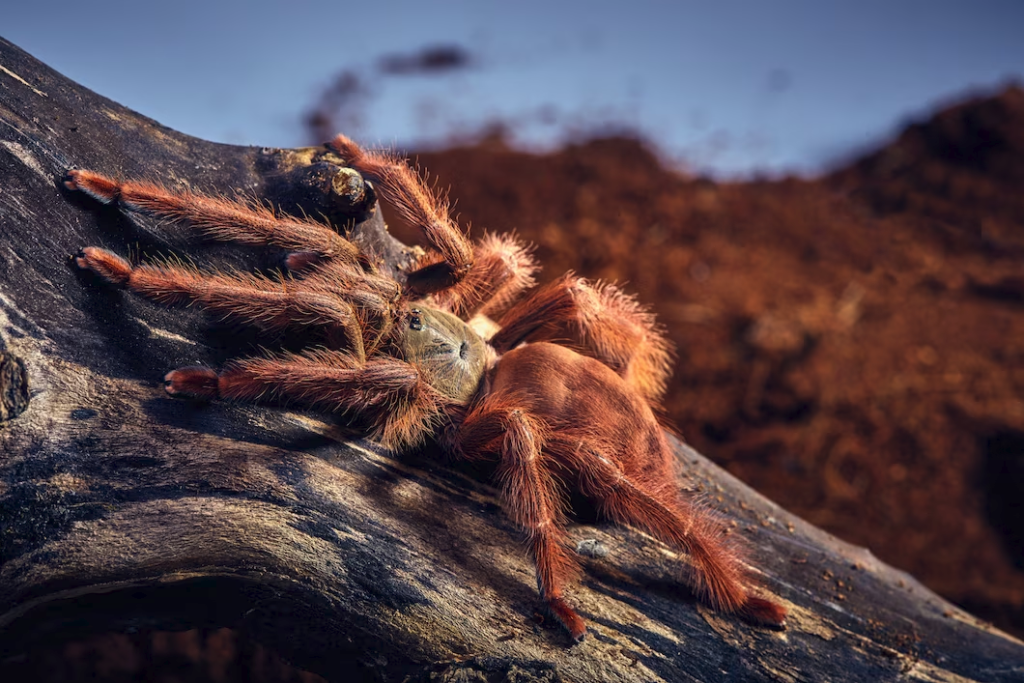
The average lifespan of a curly hair tarantula is between 10 to 15 years. However, with proper care and attention, they can live up to 20 years or even more. The lifespan of your curly hair tarantula can be influenced by various factors, such as their environment, diet, and overall health.
Habitat and Environment
The environment in which your curly hair tarantula lives can have a significant impact on their lifespan. In the wild, these tarantulas live in warm, humid forests and spend most of their time hiding in burrows or under rocks. In captivity, it is important to replicate their natural habitat to ensure they live a healthy and happy life.
To create the right environment, you need to provide a tank that is large enough for your tarantula to move around. The tank should have a substrate that retains moisture, such as coconut fiber or peat moss. The temperature in the tank should be kept between 75-85 degrees Fahrenheit during the day and can drop to 70 degrees Fahrenheit at night. The humidity level in the tank should be kept between 70-80%.
Diet and Feeding
A healthy diet is essential for the longevity of your curly hair tarantula. In the wild, they feed on insects such as crickets, grasshoppers, and roaches. In captivity, you can feed them a similar diet of live prey.

To ensure a healthy diet, you need to feed your tarantula the right amount of food. Overfeeding can lead to obesity and other health issues. Juvenile curly hair tarantulas should be fed once or twice a week, while adult tarantulas can be fed every two weeks.
Handling and Care
Handling your curly hair tarantula requires care and caution. While these tarantulas are docile and not aggressive, they can become stressed and agitated if handled improperly. When handling your tarantula, make sure to move slowly and avoid sudden movements. Do not handle your tarantula for more than a few minutes at a time.

It is also important to keep your tarantula’s tank clean. Regularly remove any uneaten prey and replace the substrate. Regular tank maintenance can help prevent the buildup of harmful bacteria and parasites, which can lead to health issues and a shorter lifespan.
Purchasing or Adopting Your Curly Hair Tarantula
If you’re interested in owning a curly hair tarantula, there are a few things to consider before making a purchase or adopting one.
- Research: Before getting a curly hair tarantula, do your research. Learn about their natural habitat, behavior, and care requirements. Make sure you’re comfortable with the idea of owning a tarantula and that you have the time and resources to provide for its needs.
- Legality: Check your local laws to make sure it’s legal to own a tarantula in your area. Some places have restrictions on keeping exotic pets, so it’s important to make sure you’re not breaking any laws.
- Source: When purchasing or adopting a curly hair tarantula, make sure you’re getting it from a reputable source. Avoid buying tarantulas from pet stores that may not have the knowledge or expertise to properly care for them. Look for a breeder or specialty store that specializes in exotic pets.
- Health: Inspect the tarantula before purchasing it to ensure that it’s healthy. Look for signs of illness, such as lethargy, lack of appetite, or discoloration. A healthy tarantula should be active, alert, and have a plump abdomen.
- Habitat: Make sure you have a suitable habitat ready for your new pet. A terrarium with a secure lid, substrate, hiding places, and a water dish is essential. Make sure the temperature and humidity levels are appropriate for your tarantula’s needs.
- Feeding: Be prepared to provide live insects as a food source for your tarantula. Crickets, mealworms, and roaches are common prey items for curly hair tarantulas.
- Cost: The cost of owning a curly hair tarantula can vary depending on the source, the size, and the accessories needed. Make sure you have a budget in mind and that you’re prepared to cover the cost of food, maintenance, and potential vet bills.
By taking the time to research, prepare, and purchase or adopt your curly hair tarantula from a reputable source, you can ensure that you and your new pet will have a happy and healthy relationship.
Curly hair tarantula tank setup
The website provides detailed instructions on how to set up a proper tank for a curly hair tarantula. The article explains that the curly hair tarantula is a popular pet among arachnid enthusiasts due to its docile nature and easy care requirements. The first step to setting up a tank for the tarantula is choosing the right size enclosure, which should be at least 2-3 times the size of the tarantula’s leg span.
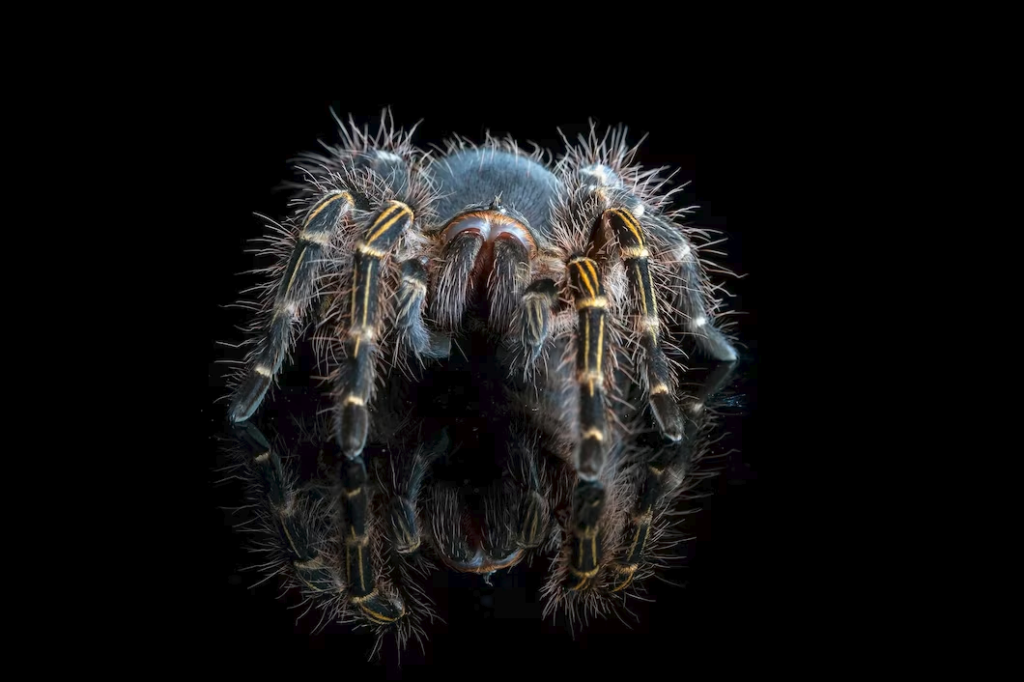
The article then goes on to explain the necessary components of the tank, including substrate, hiding places, water dish, and temperature and humidity requirements. The recommended substrate is coconut fiber or a mixture of coconut fiber and vermiculite, which should be kept moist but not wet. The hiding places should include at least one shelter for the tarantula to hide in, and a vertical hide for molting.
The water dish should be shallow and filled with fresh water, which should be changed frequently to prevent bacteria growth. The recommended temperature range for the curly hair tarantula is 75-80°F, with a humidity level of 70-80%. The article also provides suggestions on how to achieve the necessary temperature and humidity levels in the enclosure.
In conclusion, the website offers detailed and practical advice on how to set up a suitable tank for a curly hair tarantula. By following these instructions, owners can provide a safe and comfortable habitat for their pet tarantula.
Male vs Female curly hair tarantula
Male and female curly hair tarantulas have a few distinct differences. One of the most noticeable differences is their size. Female curly hair tarantulas are typically larger than males, with a leg span of 5-6 inches for females and 4-5 inches for males.
Another noticeable difference is their coloration. Female curly hair tarantulas tend to have darker coloring than males, with black or dark brown hair covering their bodies. Male curly hair tarantulas, on the other hand, tend to have lighter coloring with reddish-brown hair covering their bodies.
The most significant difference between male and female curly hair tarantulas, however, is their behavior. Male tarantulas are typically more active and may roam around the enclosure more than females. They may also become more aggressive during mating season, and their legs may appear longer and thinner than females.
Female curly hair tarantulas, on the other hand, are more docile and tend to stay in one place for longer periods. They may also be less likely to eat during molting or breeding periods.
It is important to note that determining the sex of a curly hair tarantula can be difficult, especially with younger or smaller specimens. A professional breeder or experienced tarantula owner may be better equipped to accurately determine the sex of a tarantula.
In conclusion, caring for a pet curly hair tarantula requires a bit of research and preparation, but it can be a fascinating and rewarding experience. With proper housing, feeding, and maintenance, your tarantula can live a healthy and happy life as your pet. Always be patient and gentle with your tarantula, and if you have any concerns about its health or behavior, seek advice from a qualified professional.
